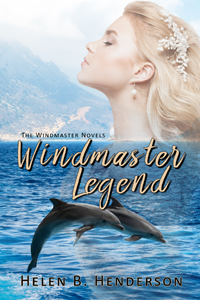https://www.bookswelove.com/donaldson-yarmey-joan/
My Self Defense Class
A friend
of mine, Bonnie, was taking Ju Jutsu and she said that her instructor, Fred,
lets people come out for a free class before deciding if they want to take
lessons. She asked me if I want to try a class. I had been thinking of learning
some sort of self-defense so I accepted her invitation.
On the Monday evening I wore leggings and a t-shirt fully expecting to watch from the sidelines and maybe try a couple of moves. Bonnie told me to remove my shoes before walking on the mats and then took me to a room when she found a white canvas gi jacket that fit. I donned it over my t-shirt and wrapped the left side over the right. Bonnie showed me the proper way to tie the obi or belt.
Everyone in the class did their own stretching and then Fred had us run around the room, first forward, then backwards, then sideways. Once that was done he said. "Line up senior to junior." I knew I was the oldest one there so I headed to the beginning of the line. Everyone looked askance at me and grinned.
"I'm the most senior person here," I said. But, apparently, the line up isn't by age. I headed to the last of the line. The person at the end gave me a warm welcome.
"At least now I'm not the newest member," he said.
The instructor then told us to do forward rolls. The others immediately took turns rolling their way across the room. Fred stood beside me and showed me how to put the back on my left hand on the mat, tuck my head and shoulder down, and push off with my back leg. Talk about being disoriented and dizzy when I sat up. Definitely not like the summersaults I used to do as a child.
"Do it again," he encouraged.
I knelt, put the back of my hand down, tucked and, after a deep breath, pushed off. Same result only this time I also felt a bit queasy. I guess I shouldn't have eaten before coming. After the third time I quit and watched the others. Fred called out for backward rolls. He looked at me with his eyebrow raised. I shook my head.
When everyone had practiced their rolls, Fred ran through a demonstration on how to get out from under an attacker when he has you pinned on the ground and is sitting on top of you. I watched others do it then tried it myself. So long as my attacker gives me lots of time and offers me a few helpful hints, I will be able to break his hold.
Fred did tell me that I should not waste my energy struggling against an attacker. It will just weaken me, he said. He showed me a choke hold to use that is easy and effective.
Ju means gentle, pliable or yielding and jutsu means technique and is the manipulating of your opponent's force against himself. It was developed to fight the armed samurai of feudal Japan in close combat by using throws, pins, or joint locks. Over the centuries ju jutsu evolved into different types of martial arts around the world, some of students practicing potentially fatal moves and also learning break falling skills so they can practice dangerous throws.
Since the beginning, students of ju jutsu trained in formal kimonos. In 1907, the founder of Judo introduced a uniform called the judogi. The gi consists of three parts: a heavy jacket called a uwagi, light canvas pants, shitabaki, and the cotton belt, obi.
At the end of the class Fred said I could come back for two more free lessons. I must have really impressed him. However, while I was glad to have had the opportunity to try a ju jutsu class I didn't return for my other two free lessons. I decided I didn't like throwing myself or other people around on a mat.
Since I was a teenager, I have practiced my own techniques to prevent being attacked that have served me well. I try not to be on the streets after dark but if I am walking at night I stride confidently with my head up and shoulders back. Attackers are cowards and they look for someone weak whom they can overpower. I carry my car keys spaced between my fingers to use for stabbing or slashing. I wear pants which are harder for an attacker to get into and low shoes or running shoes so I can get away easier. New technology has given us panic buttons on our key fobs which can be pressed to start our vehicle's horn blaring. I keep mine handy.
And I've noticed in books and on television shows that the women who are attacked and even killed are always wearing matching panties and bra. Just to be on the safe side, I make sure I never do.





















































.jpg)






